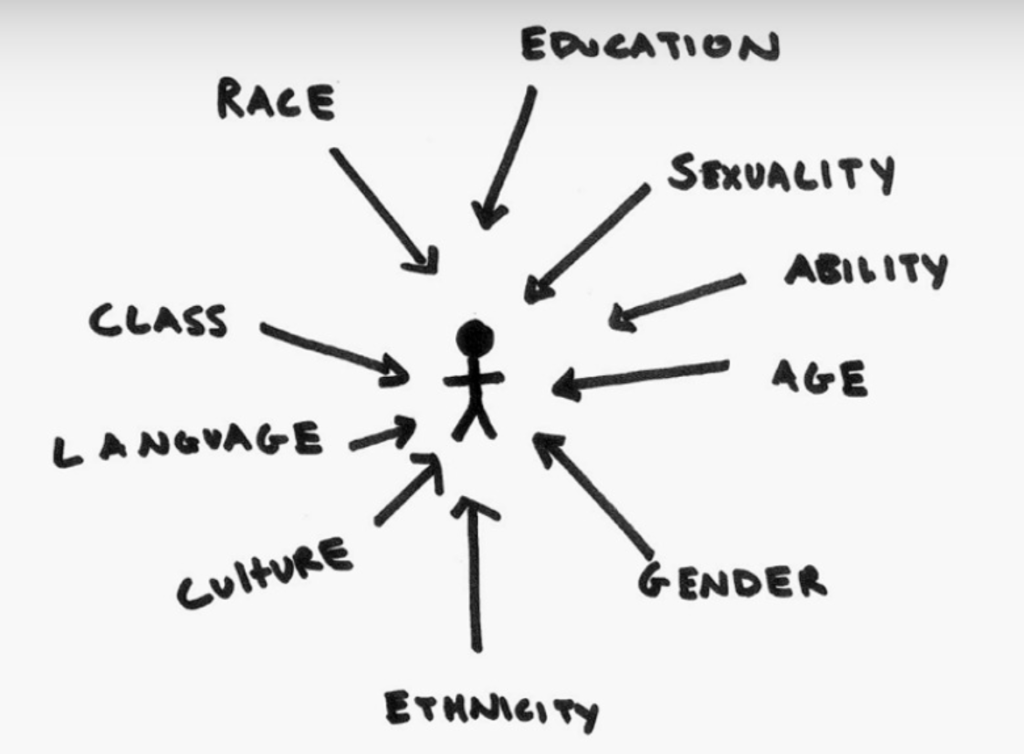Since its invention in the late 1980s, intersectionality has quickly become one of the most popular theoretical frameworks used to analyze social dynamics. From shaping efforts of diversifying spaces to becoming a buzzword within socially-conscious, intersectionality seems to be a true sign of PC times. However, the exact definition of the word depends on who you ask. Some view it as a noun, others as a verb, and others as a problem. But what does it actually mean and how does a correct understanding of it allow us to be better allies to one another?
Where It Comes From
The term was originated by Kimberlé Crenshaw in 1989. As a law professor, critical race theorist, advocate and philosopher, Crenshaw has devoted most of her life to undoing discrimination biases within courts of law. The theory of intersectionality first emerged as a metaphor in Crenshaw’s 1989 article “Demarginalizing the Intersection of Race and Sex A Black Feminist Critique of Anti-discrimination Doctrine, Feminist Theory and Antiracist Politics”.
In the article, Crenshaw utilizes 3 cases in which courts of law understood the discrimination black women faced simply through a lense of race. In doing so, they completely ignored the sexism they were subjected to because of their sex. This was done purposely in order to, as one of the judges Crenshaw Crenshaw cites stated, avoid opening the “hackneyed Pandora’s box” of oppression. Because of this, black women’s cases were not able to be understood in full and true justice could not be granted to them.
Thus, Crenshaw theorized a metaphor in order to put the layered oppressions all black women face into perspective. The metaphor was successful because of its simplicity, taking from the well known image of two roads intersecting in order to position a group of people’s social standing. All black women are situated at the intersection of racism and sexism, and it is through this understanding that their oppression should be understood when deciding a law case.
How It Has Evolved
Although Crenshaw only intended for the theoretical framework of intersectionality to be used within the world of law, it began to catch on outside this circle as it was utilized by feminists of color. As feminism itself entered mainstream conversations, women of color criticized the movement for its upholding of other types of oppressions beyond sexism. These feminists utilized the theory originated by Crenshaw in order to create a wave of change in diversifying the feminist movement in order to bring women of color’s oppressions into the conversation.
Through this use of the theory, intersectionality has moved beyond solely focusing on the intersections of race and gender in order to also include other types of oppressions like class, ability, sexuality, nationality, age, etc. Not only that, its use has evolved from a metaphor explaining how an individual can be oppressed by different systems of power to a tool used in order to fight those very oppressions.
What It Is Not
Conservatives have widely criticized the term, but most of these criticisms are based on incorrect or incomplete understandings of intersectionality. Often, conservatives and those who claim to oppose intersectionality refer to the theory as “the new caste system” in which an individual’s standing is determined by the number of oppression intersections they exist on. This argument has been used to back up claims of white, upper-class, cis-heterosexual men being the latest and most oppressed group, tormented by their privileges being somehow used against them. They argue, their positionality falls into an intersection of its own.
Crenshaw has responded to these criticisms by explaining that intersectionality is not “an effort to create the world in an inverted image of what it is now,” with a continuation of systems of power and oppression but with different groups at the top. The original intent of the theory was more aligned with the goals of critical race theory, creating “more advocacy and remedial practices” in order to do away with systems of power that would keep anyone oppressed.
What It Could Be
Intersectionality as a theoretical framework has the potential to reshape society because the evolution of the term has de-centered the oppressor and instead focused on the marginalized. The full extent of the definition asks us to be mindful of all systems of power that intersect differently for every individual, even if they don’t intersect in our social standing specifically.
The original and most honest definition of intersectionality means the simple acknowledgement that forms of oppressions are not mutually exclusive, and there will always be someone who faces the oppressions you do on top of others. It is a way to be self aware because it not only makes you realize which paths of oppression intersect for you. It makes you wonder which paths of oppression don’t, how there are other people for whom they do, and how your intersection can be used to aid theirs.



